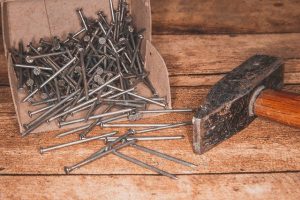
From nails and bolts to bridges and framing components, countless items are made of galvanized iron. Galvanized iron has actually been around for centuries, with some of the earliest recorded uses dating back to the 17th century. In recent years, however, it’s become an increasingly popular alternative to traditional iron as well as other metals and alloys. Unless you’re familiar with it, though, you might be wondering what is galvanized iron and how it differs from standard iron. Below, you’ll learn more about galvanized iron.
Overview of Galvanized Iron
Galvanized iron is essentially iron that’s been coated with a protective zinc layer on the outside. Iron itself is susceptible to weather-related degradation. When exposed to moisture and oxygen, for example, iron will rust and corrode. Over time, the presence of the rust and corrosion can eat through the iron, essentially jeopardizing its structural integrity. Thankfully, galvanization offers a simple and effective way to protect iron from weather-related degradation such as this.
Galvanized Iron vs Standard Iron: What’s the Difference?
Standard iron consists entirely of the metal element iron, whereas galvanized iron has an added layer of zinc to it. When iron is galvanized, it’s submerged in a bath of liquid zinc. The zinc is heated so that it changes from a solid state to a liquid state. The iron is then dipped into the bath of molten zinc, after which it’s allowed to cool. Once the zinc cools, it hardens to form a protective shell over the surface of the iron.
Galvanized iron is the same as standard iron, the only difference is that it features a layer of zinc. The added layer of zinc helps to protect the iron from rust and corrosion. Without it, the iron will be exposed to moisture and oxygen from its surrounding environment. If left unchecked, this will trigger a chemical reaction with the iron known as oxidation. Oxidation will cause the iron to rust and corrode.
How Iron Is Galvanized
There are several methods used to create galvanized iron, one of which is the hop-dip method. The hot-dip method involves the deposition of zinc onto the surface of iron by dipping the iron is molten, hot zinc. It’s the most common method used to create galvanized iron. In addition to the hot-dip method, there’s also the cold galvanization method. Cold galvanizing involves brushing a layer of cold zinc onto the surface of iron.
